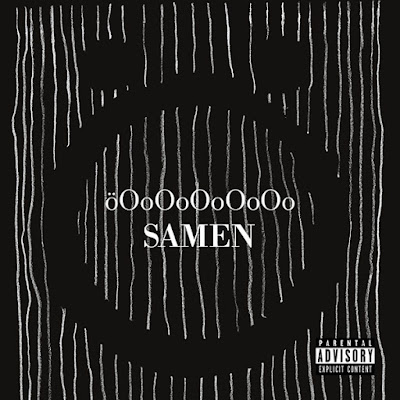As for the annual list, I'm accustomed to including older films I haven't seen prior to the current year, but this time I shall not go back as far as 2014 (seven entries). The advantage is given to weird, exotic, eccentric, whimsical, atmospheric, experimental, visually stimulating and "Oh, what a surprise!" works, although there are some exceptions to this "rule". So, without further ado, I present my pick of top 80 cinematic treats of 2016.
(Letter "E" signifies that the linked review is written in English.)
Guy Maddin & Evan Johnson / Canada
Stephen Fingleton / UK
4. Grüße aus Fukushima / Greetings from Fukushima (2016)
Doris Dörrie / Germany
5. Elle (2016)
Sergio Caballero / Spain
7. Nōnai Poizun Berii / Poison Berry in My Brain (2015)
Yūichi Satō / Japan
8. Kurīpī: Itsuwari no rinjin / Creepy (2016)
Pietro Marcello / Italy | France
11. Risttuules / In the Crosswind (2014)
Andrzej Zulawski / France | Portugal
17. The VVitch: A New-England Folktale / The Witch (2015)
Robert Eggers / USA | UK | Canada | Brazil
Nicolas Winding Refn / USA | Denmark | France
19. Evolution (2015)
Johannes Naber / Germany
Mathieu Seiler / Germany
Brady Corbet / UK | France | Hungary
Marcin Wrona / Poland | Israel
31. The Nice Guys (2016)
Shane Black / USA
32. Hrútar / Rams (2015)
Kwon Oh-kwang / South Korea
34. Notias / Mythopathy (2016)
Daniel Patrick Carbone, Lauren Wolkstein, Lily Baldwin,
Agnieszka Smoczynska / Poland
Nikias Chryssos / Germany
38. Disorder (2015)
Alice Winocour / France | Belgium
39. Simindis kundzuli / Corn Island (2014)
George Ovashvili / Georgia | Germany | France |
Petr Kazda & Tomás Weinreb / Czech Republic |
Poland | Slovakia | France
41. Boi neon / Neon Bull (2015)
Gabriel Mascaro / Brazil | Uruguay | Netherlands
42. A Bigger Splash (2015)
Jae-hyun Jang / South Korea (E)
45. Gesu no ai / Lowlife Love (2015)
Aleksey German Jr, 2015 / Russia | Ukraine | Poland
47. Die dunkle Seite des Mondes / The Dark Side of the Moon (2015)
Stephan Rick / Germany | Luxembourg
48. Goksung / The Wailing (2016)
Hong-Jin Na / South Korea
49. Busanhaeng / Train to Busan (2016)
Sang-ho Yeon / South Korea
50. Scare Campaign (2016)
Cameron Cairnes & Colin Cairnes / Australia
Nicolas Pesce / USA
Jeppe Rønde / Denmark
53. Miss Peregrine's Home for Peculiar Children (2016)
Tim Burton / UK | Belgium | USA
54. Deo Pon / The Phone (2015)
Kim Bong-Joo / South Korea
55. Heart of a Dog (2015)
Laurie Anderson / USA | France
56. Zir-e Sayeh / Under the Shadow (2016)
Babak Anvari / UK | Qatar | Jordan | Iran
57. Saul fia / Son of Saul (2015)
László Nemes / Hungary
58. He Never Died (2015)
Jason Krawczyk / USA | Canada
59. 4 Könige / 4 Kings (2015)
Theresa von Eltz / Germany
60. The Invitation (2015)
Karyn Kusama / USA
61. El abrazo de la serpiente / Embrace of the Serpent (2015)
Ciro Guerra / Colombia | Venezuela | Argentina
62. Southbound (2015)
Roxanne Benjamin, David Bruckner,
Patrick Horvath & Radio Silence / USA
63. Demolition (2015)
Jean-Marc Vallée / USA
64. Aloys (2016)
Tobias Nölle / Switzerland | France
65. High-Rise (2015)
Ben Wheatley / UK | Belgium
66. Identicals (2015)
Simon Pummell / UK
67. Ham-jeong / Exchange (2015)
Hyeong-jin Kwon / South Korea
68. Polednice / The Noonday Witch (2016)
Jiří Sádek / Czech Republic
69. Tu dors Nicole / You're Sleeping Nicole (2014)
Nicolette Krebitz / Germany
71. Mi gran noche / My Big Night (2015)
Álex de la Iglesia / Spain
72. Deadpool (2016)
Tim Miller / USA
73. Swiss Army Man (2016)
Dan Kwan & Daniel Scheinert / USA
74. Der Nachtmahr / The Nightmare (2015)
Akiz / Germany
75. Nachthelle / Bright Night (2015)
Florian Gottschik / Germany
76. El vigilante / Night Guard (2016)
Elena Hazanov / Germany | Russia | Switzerland
78. Mot naturen / Out of Nature (2014)
Ole Giæver & Marte Vold / Norway
79. Shelley (2016)
Ali Abassi / Denmark | Sweden
80. Before I Wake (2016)
Mike Flanagan / USA



















































